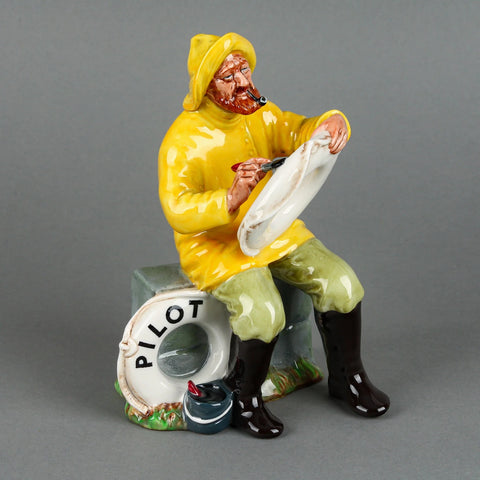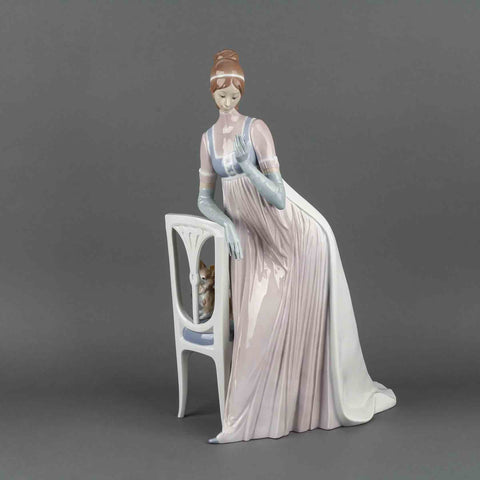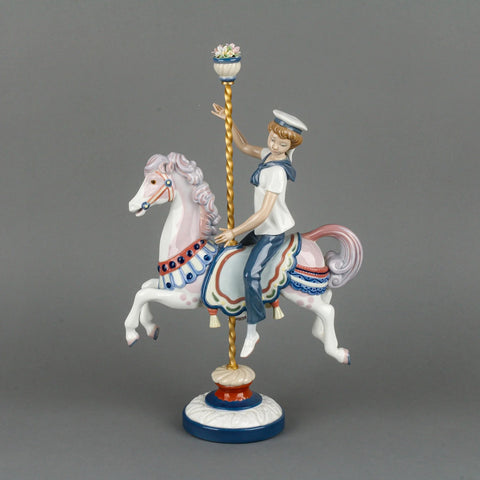For porcelain figurine collectors, two names stand out for their exceptional craftsmanship and enduring popularity: Royal Doulton and Lladró. While both brands are renowned for their exquisite porcelain creations, they have distinct histories and unique characteristics that set them apart. We explore the origins, artistic styles, and market presence of Royal Doulton and Lladró, offering a comparison for collectors and enthusiasts alike.
The Legacy of Royal Doulton

Origins and Evolution
Royal Doulton, a quintessentially British brand, has a rich history that dates back to 1815. The company was founded by John Doulton, Martha Jones, and John Watts and initially focused on stoneware and sanitary ware. It was in the late 19th century that Royal Doulton began producing decorative porcelain items, including figurines. The brand gained immense popularity in the early 20th century, especially with the introduction of the HN series of figurines in 1913, named after artist Harry Nixon.
Artistic Style and Craftsmanship
Royal Doulton figurines are celebrated for their realistic and detailed depictions of people from various eras and walks of life. These pieces often reflect British culture and history, showcasing characters in period attire and everyday scenes. The craftsmanship of Royal Doulton is marked by intricate hand-painting and a traditional approach to porcelain making, which has been passed down through generations.

Collectible Lines and Notable Series
Some of the most sought-after Royal Doulton collectibles include the "Pretty Ladies" series, character jugs, and limited edition pieces. The company has also produced special lines in collaboration with renowned artists and designers, adding to the diversity and appeal of its collections.
The Artistry of Lladró
Beginnings and Growth
Unlike Royal Doulton's British roots, Lladró hails from Spain and was founded in 1953 by three brothers: Juan, José, and Vicente Lladró. Starting in a small workshop in Almàssera, near Valencia, the Lladró brothers initially focused on classical vases and jugs. By the 1960s, they had expanded into the creation of figurines, which quickly became the brand's hallmark.

Distinctive Design and Techniques
In contrast to the bold and broad colour palette of Royal Doulton, Lladró figurines are renowned for their ethereal, delicate beauty, often featuring soft pastel colours and a glossy finish. The brand's signature style blends contemporary and classical elements, focusing on themes like nature, spirituality, and family. Lladró also stands out for its innovative use of porcelain, developing proprietary methods to achieve intricate and delicate designs.
Iconic Collections and Themes
Lladró is known for its diverse range of figurines, from traditional subjects like brides and ballerinas to more avant-garde and whimsical designs. The brand has also delved into limited editions and high-end sculptures, often collaborating with contemporary artists and designers to push the boundaries of porcelain art.
Royal Doulton vs. Lladró: A Comparative Summary
- Cultural Influence and Representation. One of the primary differences between Royal Doulton and Lladró is their cultural representations. Royal Doulton figurines often depict British societal themes and historical figures, resonating with a sense of tradition and heritage. In contrast, Lladró's creations focus on timeless themes and emotions that transcend specific cultures.
- Design Philosophy and Aesthetic Appeal. The aesthetic of Royal Doulton leans towards realism and detailed portrayal, with a strong emphasis on character and narrative. Lladró, on the other hand, is characterized by a dreamlike, almost ethereal quality, focusing on grace, fluidity, and emotional expression. This contrast in design philosophy is evident in the choice of subjects, colour schemes, and finishes of the figurines.
- Market Position and Collector Base. Royal Doulton and Lladró have established themselves as prestigious names in the world of collectible figurines. However, their collector bases differ slightly. Royal Doulton appeals to those who appreciate traditional craftsmanship and British cultural themes. Lladró attracts collectors who are drawn to contemporary elegance and artistic innovation. Additionally, the price points of the two brands vary, with Lladró generally positioned at the higher end of the market, especially for their limited editions and larger sculptures.
- Evolution and Adaptation. Both companies have shown remarkable adaptability over the years, evolving their product lines to meet changing tastes and market trends. Royal Doulton has expanded its range to include more modern and diverse themes. At the same time, Lladró has ventured into home decor and jewelry, broadening its appeal beyond traditional figurines.
Royal Doulton and Lladró Figurines - Final Thoughts
Royal Doulton and Lladró, each with their distinct heritage and artistic approach, continue to enchant collectors and art enthusiasts worldwide. Whether it's the rich, narrative-driven pieces of Royal Doulton or the serene, elegant creations of Lladró, both brands offer something unique and valuable to the world of porcelain art. Their choice ultimately depends on individual tastes and the themes that resonate most with each collector. Regardless of preference, the enduring appeal of both Royal Doulton and Lladró testifies to their mastery of the art of porcelain figurines and their significant place in the annals of decorative arts.
Best Porcelain Figurine Brands at Around the Block Toronto
For more than 14 years, Around the Block consignment has been Toronto’s go-to destination for porcelain figurines. We regularly carry all the top porcelain figurine brands, including Royal Doulton, Lladró, Herend, Paragon, Dresden, Hummel, and more! Visit our collection of porcelain figurines for sale online or drop by our showroom in person to immerse yourself in the world of delicate and diverse porcelain figurines.


